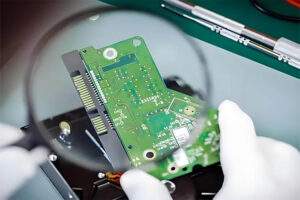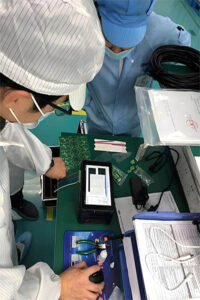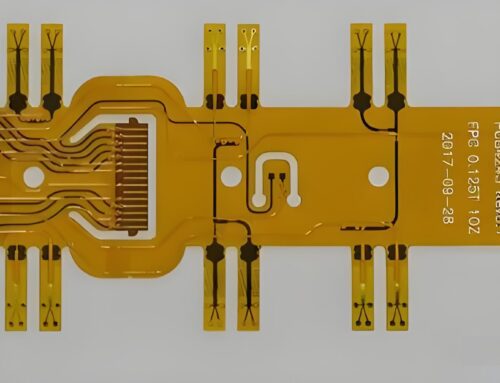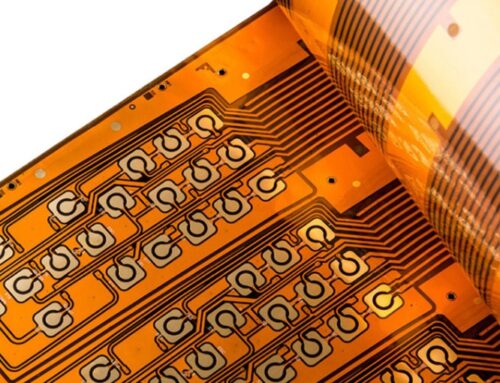How to Test PCB Board: 8 Common Testing Methods
introduction
The purpose of PCB testing and inspection is to verify that the PCB meets the performance standards of a printed circuit board. This ensures that all PCB manufacturing processes operate according to project specifications without any defects.
A PCB consists of various elements and components, each of which affects the overall performance of the electronic circuit. Detailed examination of these components is conducted to guarantee the quality of the PCB. This article introduces how to test PCB board 8 methods.
How to Test PCB Board: Visual Inspection
Visual inspection is a manual testing method where an experienced inspector uses magnifying glasses or microscopes to check for soldering defects and other visible issues. This method is suitable for examining the visible aspects of a circuit board, such as poor solder mask application, component orientation, or scratches, which can lead to board failure.
Advantages:
Cost-effective and straightforward—does not require test fixtures or complex setups.
Most major soldering defects can be identified.
Disadvantages:
Subject to human error, which may vary depending on the technician’s skill.
Only visible solder points can be inspected; hidden solder points cannot be evaluated.
Functional Testing:
Functional testing is a critical step in PCB manufacturing, serving as a litmus test for PCB performance. This test involves connecting the PCB to high-end testing equipment to undergo a series of carefully designed procedures to ensure it operates as expected. Functional testing not only detects faults but also ensures that various components on the board work harmoniously.
Design Specifications:
The Guiding Light Design specifications are the core guide for functional testing. They represent the culmination of engineering knowledge, detailing the expected performance of the PCB. These specifications translate into clear testing standards, and the PCB is considered qualified only if it meets these standards perfectly. Any deviation indicates the need for further adjustment and optimization.
Testing Equipment:
The Effective Assistant The accuracy and efficiency of functional testing largely depend on the testing equipment used. These devices simulate various working scenarios, from power supply to signal transmission, conducting thorough inspections. Advanced equipment can even provide real-time feedback, offering engineers a tool to quickly locate and resolve issues.
Component Coordination:
The Symphony of Performance In the microscopic world of PCBs, each electronic component is like a musician in an orchestra. Functional testing ensures that these “musicians” work together perfectly to create a harmonious electronic melody. If any component is out of tune, the entire system’s performance will be affected. Thus, functional testing is crucial for maintaining the overall performance of the circuit board.
Thermal Cycle Testing:
PCB’s Extreme Temperature Challenge
In the precision world of electronic manufacturing, the quality of printed circuit boards (PCBs) is fundamental to product reliability. When it comes to PCB testing, thermal cycle testing is undoubtedly a key method. This test reveals the PCB’s stability under extreme temperature fluctuations.
Facing Extreme Temperature Challenges Imagine your PCB operating under the blazing summer sun or on cold winter nights. This is the environment simulated by thermal cycle testing—from high to low temperatures. This process not only tests the material properties of the PCB but also the strength of solder joints. The goal of thermal cycle testing is to ensure that the PCB remains stable under such dramatic temperature changes.
Thermal expansion and PCB stability:
Thermal Expansion and PCB Stability Thermal expansion is a core concept in thermal cycle testing. As materials heat up, their molecular structure expands, increasing volume. For a PCB, this means the materials must maintain precise dimensions at different temperatures. The thermal expansion coefficient becomes a crucial parameter for assessing material stability under temperature changes. A well-designed PCB should have a thermal expansion coefficient that ensures circuit integrity even at extreme temperatures.
Solder Joints:
The Strength of Connections In thermal cycle testing, the stability of solder joints is a major concern. Solder joints, serving as the bridge between electronic components and the PCB, directly impact the circuit’s reliability. In fluctuating temperatures, solder joints may experience fatigue due to thermal expansion and contraction, potentially leading to cracks. Therefore, the choice of solder joint materials, design, and manufacturing processes must be carefully considered to maintain strength and stability over prolonged thermal cycles.
How to Test PCB Board: Mechanical Stress Testing
A Deep Dive Mechanical Stress Testing:
The Guardian of PCB Durability In the complex world of electronic products, printed circuit boards (PCBs) bear the responsibility of connecting numerous precision components. However, how is their durability ensured when facing physical world challenges? Mechanical stress testing provides the answer. This test simulates various physical impacts to ensure the PCB remains resilient during transportation and everyday use.
Physical Impact:
More Than Just Drops Electronic devices inevitably face accidental drops or impacts in daily life. Mechanical stress testing includes physical impact tests that simulate these scenarios to evaluate the PCB’s impact resistance. This involves not only drop tests but also diagonal impacts and edge collisions, thoroughly assessing the PCB’s structural strength.
Vibration Testing:
The Long-Term Stability Test Vibration, an unavoidable phenomenon in many industrial and transport environments, can significantly affect PCBs. The vibration testing part of mechanical stress testing simulates continuous vibrations during equipment operation to test long-term stability. This step is crucial for ensuring the device’s reliability during extended operation.
Durability Testing:
Reliability Under Continuous Pressure In the final stage of mechanical stress testing, durability testing becomes crucial. This test evaluates the PCB’s resistance to fatigue through repeated bending, twisting, and compression. It not only assesses the PCB’s performance under a single impact but also focuses on its durability under continuous pressure.
Electrical Testing:
The Fine Art Electrical Testing:
PCB’s Electrical Health Check In the meticulously woven world of electronic manufacturing, each stage of the PCB must undergo rigorous testing. Electrical testing is a critical step that ensures the circuit board’s electrical performance meets design specifications. It verifies circuit continuity and assesses insulation, assuring the circuit’s integrity and safety.
Circuit Continuity:
The Bridge of Electrical Connections Circuit continuity testing is essential to ensure that current flows unobstructedly through the preset paths. Carefully designed testing equipment detects any potential breakpoints or connection issues. These tests are vital for identifying defects in the manufacturing process and ensuring stable circuit operation.
Insulation:
The Key to Safe Isolation Insulation Testing protects electronic device safety. By measuring insulation resistance, this test evaluates the effectiveness of isolation materials, ensuring that current does not leak accidentally and avoiding short circuits and electric shock risks. This test is crucial for enhancing user confidence in product safety.
Testing Equipment:
Tools for Accurate Measurement The accuracy of electrical testing relies on a range of specialized equipment. From multimeters to advanced automatic testing devices, these tools provide necessary data to help engineers evaluate PCB electrical characteristics. They simulate real working conditions to predict PCB performance under various environments.
Optical Inspection:
The Power Optical Inspection: The Guardian of PCB Quality In the precise craft of electronic manufacturing, the flawless quality of PCBs is the cornerstone of product reliability. Optical inspection technology, with its keen “vision” and intelligent analysis capabilities, has become a crucial aspect of ensuring PCB quality.
High-Resolution Cameras:
The Tool for Detailed Inspection High-resolution cameras are powerful tools for detecting PCB defects. They capture details that are invisible to the naked eye, from tiny cracks to uneven coatings, leaving no flaw unnoticed.
Image Processing Software:
The Smart Defect Catcher Image processing software is an intelligent assistant in optical inspection. By enhancing images through algorithms, it makes defects stand out. Its automated defect detection and classification functions greatly improve the speed and accuracy of inspections.
Critical Detection of Minor Defects On the PCB production line, even minor defects can be potential causes of product failure. Optical inspection technology can promptly detect these potential issues, providing strong support for quality control.
X-Ray Inspection:
The Penetration Power X-Ray Inspection:
Seeing the Internal World of PCBs In the manufacturing process of printed circuit boards (PCBs), ensuring internal structural integrity is crucial. X-ray inspection, as a non-destructive testing method, provides a powerful tool for seeing inside PCBs. It can reveal internal defects such as short circuits or voids that are not visible to the naked eye, which is crucial for multi-layer PCB quality and reliability.
Non-Destructive Testing:
Gentle and Precise Examination The non-destructive nature of X-ray inspection makes it a preferred method for PCB testing. It allows engineers to thoroughly examine internal structures without damaging the circuit board. This gentle approach ensures that the PCB can continue to be used in further manufacturing processes after testing.
Internal Defects:
The Discoverer of Hidden Issues Internal defects, such as short circuits or voids, can significantly impact PCB performance. X-ray inspection accurately locates these defects, enabling manufacturers to make necessary repairs before the product goes to market. The high-resolution imaging technology of this method is key to discovering and resolving these issues.
Multi-Layer PCBs:
The Challenge of Complex Structures As electronic devices become more complex, multi-layer PCBs are increasingly common. X-ray inspection is particularly important in these complex structures because it can penetrate multiple layers of material to check the integrity of each layer. This is crucial for ensuring the long-term reliability and performance of multi-layer PCBs.
Environmental Stress Screening:
A Deep Dive Environmental Stress Screening (ESS):
The Litmus Test for PCB Reliability Predicting and ensuring the long-term performance of PCBs in the electronic manufacturing field is a challenge. Environmental Stress Screening (ESS) provides a powerful tool with its unique accelerated testing methods. By simulating harsh environmental conditions such as high temperatures, low temperatures, humidity, and vibrations, ESS can reveal potential issues that may arise after extended use.
Accelerated Testing:
Foreseeing PCB’s Future Performance ESS’s accelerated testing approach involves subjecting PCBs to harsh environmental conditions to reveal potential failures in advance. This allows engineers to identify and address issues before the product is launched, ensuring greater reliability and longevity.
Simulating Real-World Conditions:
The Essence of Testing ESS aims to replicate real-world conditions to provide an accurate assessment of PCB performance. This includes simulating environmental factors such as temperature fluctuations, humidity, and vibrations that the PCB may encounter during its lifecycle.
Reliability Testing:
The Guarantee of Long-Term Performance Through ESS, the reliability of PCBs is thoroughly evaluated. The goal is to ensure that the circuit board can withstand long-term use and harsh conditions without failure. By identifying potential weaknesses, ESS helps manufacturers optimize design and manufacturing processes to enhance product durability.
conclusion
Regardless of the method chosen, PCB testing is a necessary step in the circuit board design and manufacturing process. It can save a significant amount of unnecessary time and cost before final production by identifying potential defects that could affect the circuit. Generally, an appropriate combination of the aforementioned inspection and testing methods can detect all possible defects, with the cost depending on the specific application and complexity of the circuit being tested.











Leave A Comment